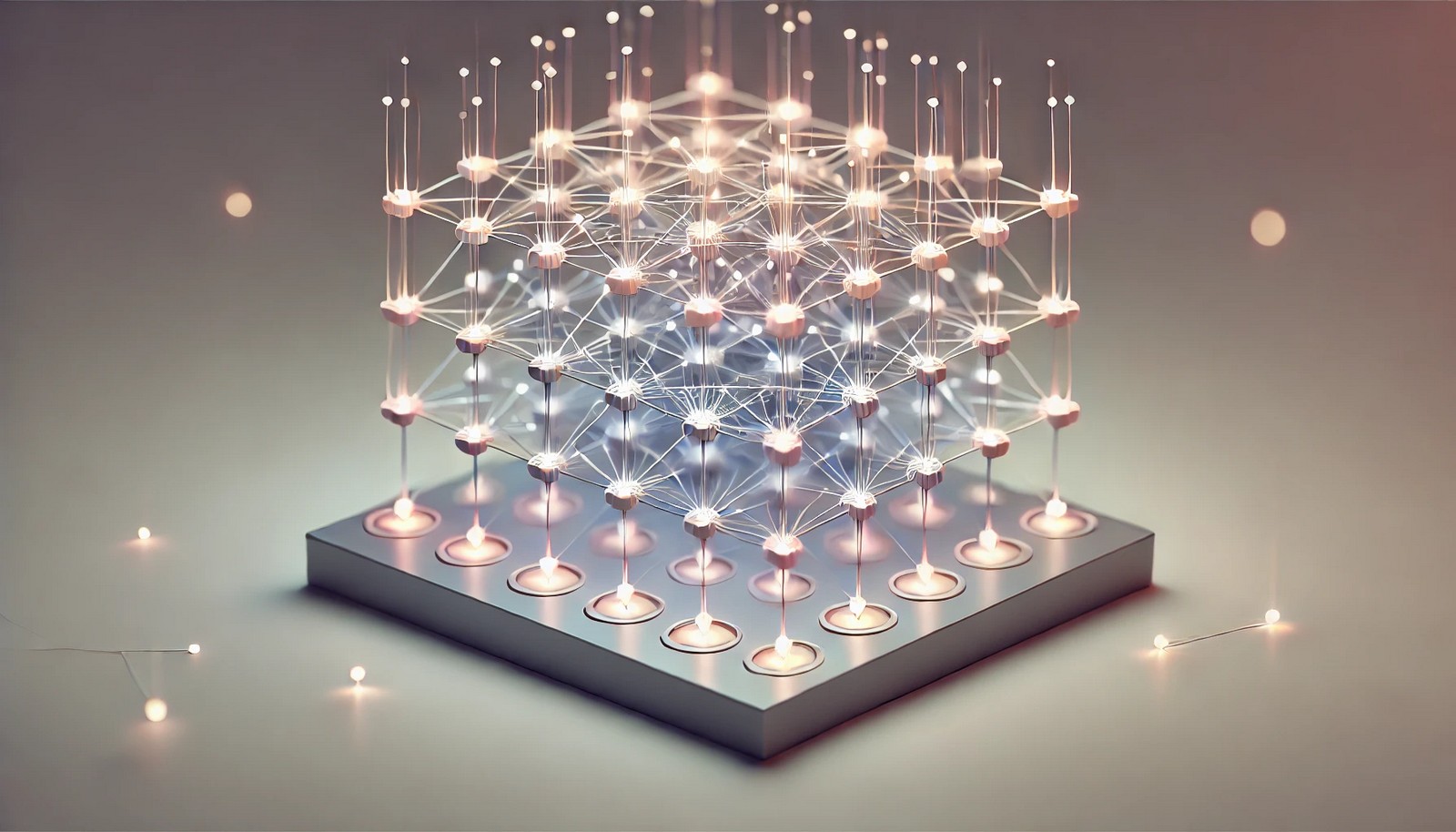Multilayer Perceptron (MLP)

Quick Navigation:
- Multilayer Perceptron Definition
- Multilayer Perceptron Explained Easy
- Multilayer Perceptron Origin
- Multilayer Perceptron Etymology
- Multilayer Perceptron Usage Trends
- Multilayer Perceptron Usage
- Multilayer Perceptron Examples in Context
- Multilayer Perceptron FAQ
- Multilayer Perceptron Related Words
Multilayer Perceptron Definition
A Multilayer Perceptron (MLP) is a class of feedforward artificial neural networks that consist of an input layer, one or more hidden layers, and an output layer. Each layer comprises neurons connected by weighted edges, enabling the MLP to learn and make predictions. MLPs utilize backpropagation as a learning algorithm to adjust the weights of these connections, minimizing errors in output. They’re foundational in AI for tasks like image recognition, speech processing, and predictive modeling.
Multilayer Perceptron Explained Easy
Think of an MLP as a group of workers that pass messages from one to another. Each worker (or neuron) makes a decision and then shares it with the next group. By the time the message reaches the last worker, it has gone through many transformations, making the final decision very accurate. This process is similar to how an MLP learns and improves.
Multilayer Perceptron Origin
The development of MLPs in the 1980s marked a breakthrough in artificial intelligence, as they were among the first models capable of handling non-linear data. This evolution led to deep learning advancements in the late 20th and early 21st centuries.
Multilayer Perceptron Etymology
The term “Multilayer Perceptron” refers to a neural network structure with multiple interconnected layers, where “perceptron” denotes a basic unit of computation or neuron within the network.
Multilayer Perceptron Usage Trends
MLPs have seen increasing popularity with the rise of deep learning and are widely used in domains like finance, healthcare, and e-commerce for tasks including risk assessment, diagnosis, and personalized recommendations.
Multilayer Perceptron Usage
- Formal/Technical Tagging:
- Neural Network
- Machine Learning
- Data Science
- Deep Learning - Typical Collocations:
- "multilayer perceptron model"
- "MLP neural network"
- "training an MLP"
- "MLP for image classification"
Multilayer Perceptron Examples in Context
- In image classification, an MLP processes pixel data through multiple layers to identify objects like cats or cars.
- MLPs can analyze historical stock prices to predict future market trends.
- Speech recognition systems use MLPs to convert spoken language into text.
Multilayer Perceptron FAQ
- What is a Multilayer Perceptron?
An MLP is a neural network model consisting of multiple layers that process data to make predictions. - How is MLP different from other neural networks?
MLPs are simple feedforward networks, whereas other networks like CNNs have specialized architectures for tasks like image processing. - What are the primary components of an MLP?
An MLP has an input layer, one or more hidden layers, and an output layer, with neurons connected by weighted edges. - What tasks can MLPs perform?
MLPs are used in classification, regression, and pattern recognition. - Is an MLP suitable for real-time applications?
Yes, optimized MLPs can handle real-time tasks, though they may require significant computational resources. - Why are hidden layers important in an MLP?
Hidden layers allow MLPs to learn complex patterns in data by transforming inputs through multiple stages. - How does backpropagation work in an MLP?
Backpropagation adjusts weights in the network by minimizing error in the output, enabling the MLP to learn effectively. - What are some common applications of MLPs?
Applications include fraud detection, facial recognition, and medical diagnosis. - How do MLPs relate to deep learning?
MLPs are foundational in deep learning, often serving as the basic structure for more advanced neural networks. - Can MLPs handle complex data?
Yes, with enough layers and neurons, MLPs can model complex, non-linear relationships in data.
Multilayer Perceptron Related Words
- Categories/Topics:
- Artificial Intelligence
- Machine Learning
- Neural Networks
- Deep Learning
Did you know?
MLPs were initially dismissed by researchers due to their limited capabilities in the 1970s. However, with the invention of backpropagation and improved computational power, MLPs became a cornerstone of modern AI, setting the stage for deep learning breakthroughs.
PicDictionary.com is an online dictionary in pictures. If you have questions or suggestions, please reach out to us on WhatsApp or Twitter.Authors | Arjun Vishnu | @ArjunAndVishnu

I am Vishnu. I like AI, Linux, Single Board Computers, and Cloud Computing. I create the web & video content, and I also write for popular websites.
My younger brother, Arjun handles image & video editing. Together, we run a YouTube Channel that's focused on reviewing gadgets and explaining technology.



Comments powered by CComment